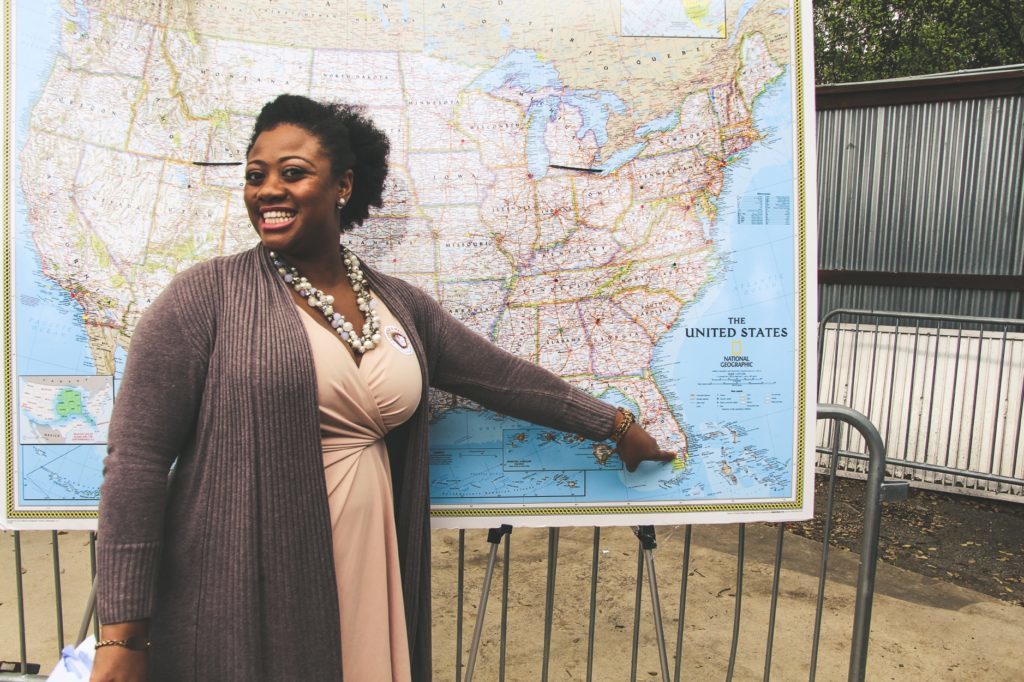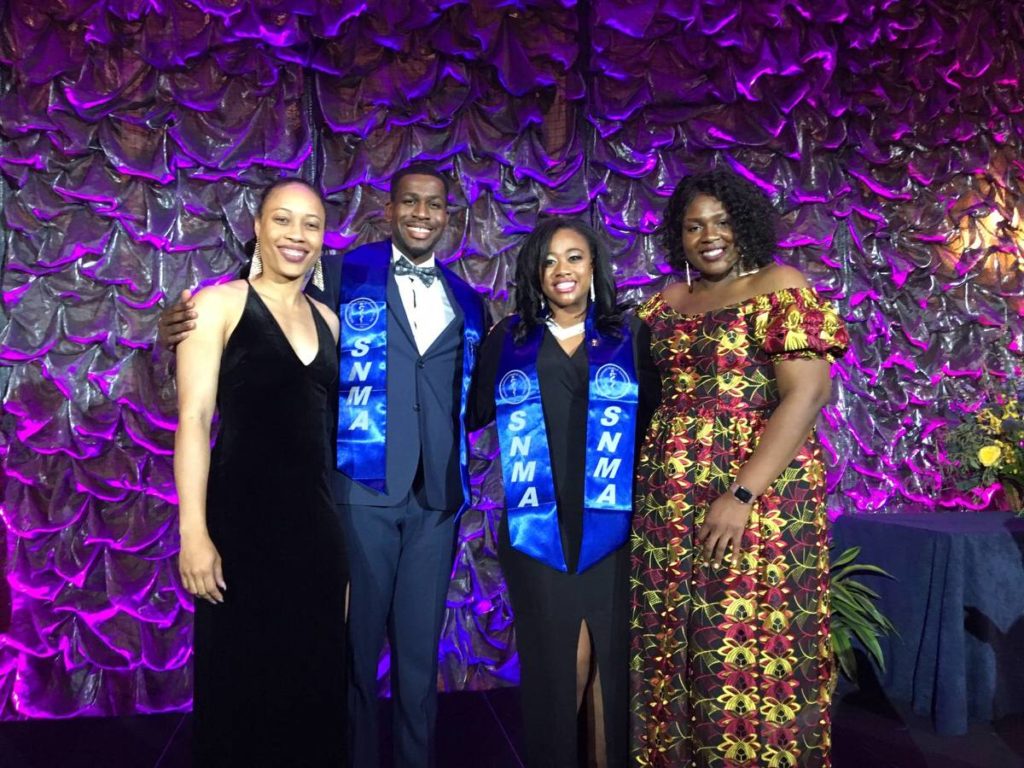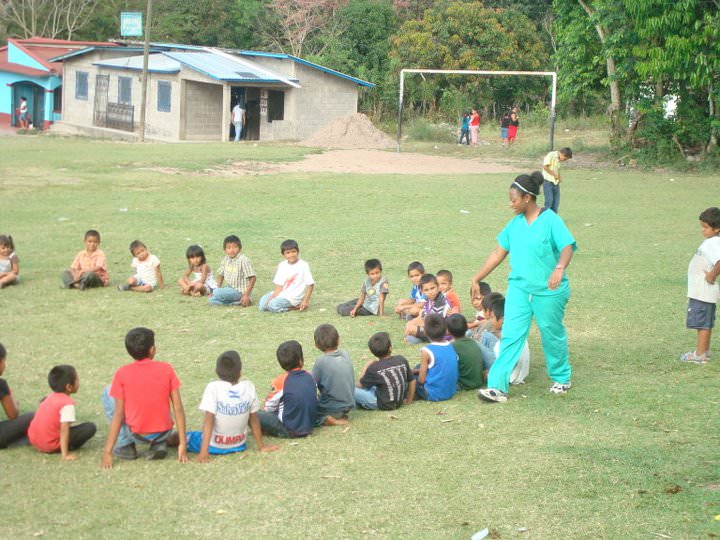Dr. Tiffani Houston: Medicine, Dance, and the Move to Miami
 Dr. Tiffani Houston, a graduate of the South Texas Medical Scientist Training Program, will be walking the stage on May 18 as one of the four M.D./Ph.D. students set to graduate this year. After graduation, she will be moving to Miami to pursue a combined Internal Medicine and Pediatrics residency at the University of Miami Jackson Memorial Hospital System.
Dr. Tiffani Houston, a graduate of the South Texas Medical Scientist Training Program, will be walking the stage on May 18 as one of the four M.D./Ph.D. students set to graduate this year. After graduation, she will be moving to Miami to pursue a combined Internal Medicine and Pediatrics residency at the University of Miami Jackson Memorial Hospital System.
Dr. Houston explains her aspirations to become a doctor began during her experience with her baby brother.
“When I was 16, my two-year-old baby brother was diagnosed with acute myeloid leukemia and we spent a lot of the hours in the hospital,” she explained. “Prior to his illness I was pursuing a career in theatre and dance.”
Although she had decided that medicine was her new path once he went into remission, she explained that she fell in love with science and research during her undergraduate years at the University of North Texas (UNT) where she worked in a lab studying the effects of ocean acidification and red blood cell sickling due to pH induced hemogloblin polymerization.

Dr. Houston and baby brother in 2012 after she finished her STEP 1 board exam, prior to entering into graduate school.
“I was hooked, I loved the hands-on nature of research and the opportunity to engage in trial and error. There’s both creativity and structure in science. It massages both sides of the brain because there’s the artistic side that allows creativity along with the rigidity necessary in sound experimental design. Experiencing that perfect balance and seeing your ideas flourish is what excites me the most.”
Dr. Houston was accepted into the South Texas Medical Scientist Training Program during her final semseter at UNT and began the program in 2010.
“I wanted all the knowledge in both an M.D. and a Ph.D. degree I looked at all the options such as being an M.D. with distinction or being involved in research but I just wanted the unbridled experience of being in a research career.”
Houston explained that the program is incredibly rigorous with the first two years in medical school and then three to five years in graduate school and a return to medical school for the final two years.
While as a graduate student, she worked in the lab of Dr. Rita Ghosh where she examined the effect of arsenic on bladder cells.
“Arsenic is a naturally occurring metal. If you live in a county with good filtration it may be ok; but if you live in a city with poor infrastructure or where there is increased disruption of the earth, such as in areas with fracking, oil or construction—there are more possibilites for the heavy metal to seep into ground and drinking water sources,” she said. “The public health data also shows that there is an increased risk of exposure in communities that are marginalized and have less resources.”
She explained that her project was novel because it was previously thought that you would have to consume an inordinate amount of arsenic to have an effect on bladder cells but there wasn’t a lot of research on the topic, especially at the molecular level.
Her research shows that at even low levels, while arsenic causes inflammation, its endocrine disrupting effects also impedes anti-inflammatory gene expression important for wound healing and repair in the bladder.
Dr. Houston is also involved with the Student National Medical Association (SNMA) where she currently serves as National Chairperson of the Board of Directors for the 2018-2019 administration. The 2019 Annual Medical Education Conference in Philadelphia hosted over 2200 medical and premedical student attendees.
“It’s completely student run and we are committed to supporting current and future underrepresented minority medical students, addressing the needs of underserved communities, and increasing the number of clinically excellent, culturally competent and socially conscious physicians. We have a 55 year legacy to get more historically underrepresented students into medical school and also to support the communities we come from.”
She explained that without diversity, there is a decrease in thought, experiences, and cultural competency in the healthcare professions.
“55 years later, there’s still a disparity in the physician workforce. For instance, today, there’s only 5-7 percent of doctors from African descent, while 13-15 percent make up the US population.”
She explained that the organization works through its local chapters and regions to implement programs that address many important matters in medical education and underserved communities.
“My time in medical school has been centered on providing opportunities for students from diverse backgrounds, working with allies, as well as being a resource to patients that do not have access to care.”
One way that she is passionate about giving back is by going on medical mission trips through the Christian Medical and Dental Association. So far, she has traveled to various border towns, such as Eagle Pass and Laredo, TX. She has also served in Tegucigalpa, Honduras.
“There wasn’t a clinic in the mountains of Honduras so everyone would be in the village church lined up…and the need was so great.” she said. “It gave me such a different attitude on contentment and joy… just being there playing pato, pato, ganso with the kids.”
She explained that she feels that the combined Internal Medicine-Pediatrics residency program is the perfect fit for her because she’ll be able to care for all patients during her medical mission trips. Also, her future research career in environmental exposures applies to both old and young populations and she is optimistic that her future discoveries can be translated to pediatric and adult medicine.
Dr. Houston will be off to Miami shortly and is excited to start this next chapter in her life.

After graduation, she will be moving to Miami to pursue a combined Internal Medicine and Pediatrics residency at the University of Miami Jackson Memorial Hospital System.
“Miami is a fantastic city! There is great need among the patient population and residents are trained in patient advocacy. The global health opporunties are abundant and I will receive solid clinical and research training in one of the highest volume medical centers in the region. Also, there are lots of amateur theatre and dance groups and I plan to join one of them!”
 This article was written by Charlotte Anthony, marketing specialist at the Graduate School of Biomedical Sciences at UT Health San Antonio. This article is part of the “Meet The Researcher” series which showcases researchers at the Graduate School of Biomedical Sciences at University of Texas Health Science Center San Antonio.
This article was written by Charlotte Anthony, marketing specialist at the Graduate School of Biomedical Sciences at UT Health San Antonio. This article is part of the “Meet The Researcher” series which showcases researchers at the Graduate School of Biomedical Sciences at University of Texas Health Science Center San Antonio.



